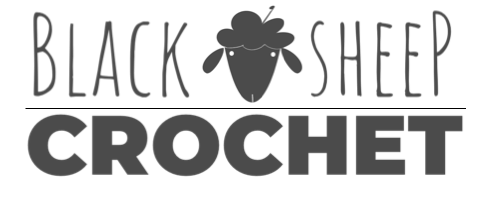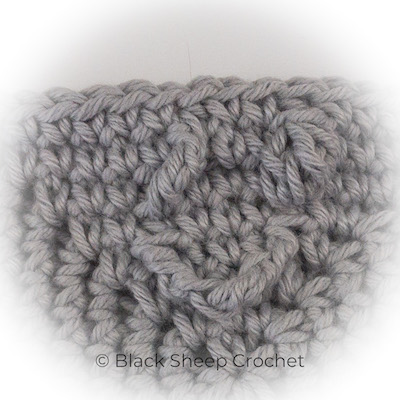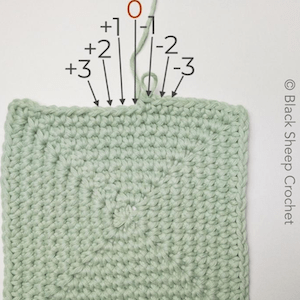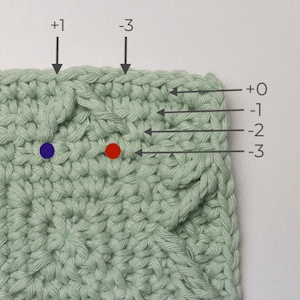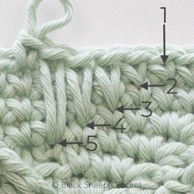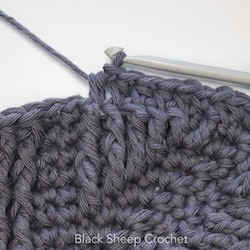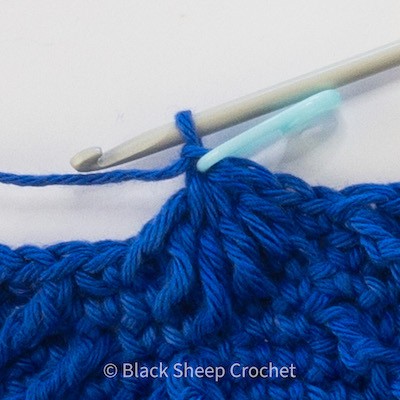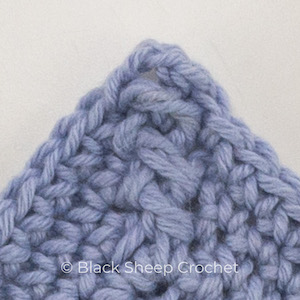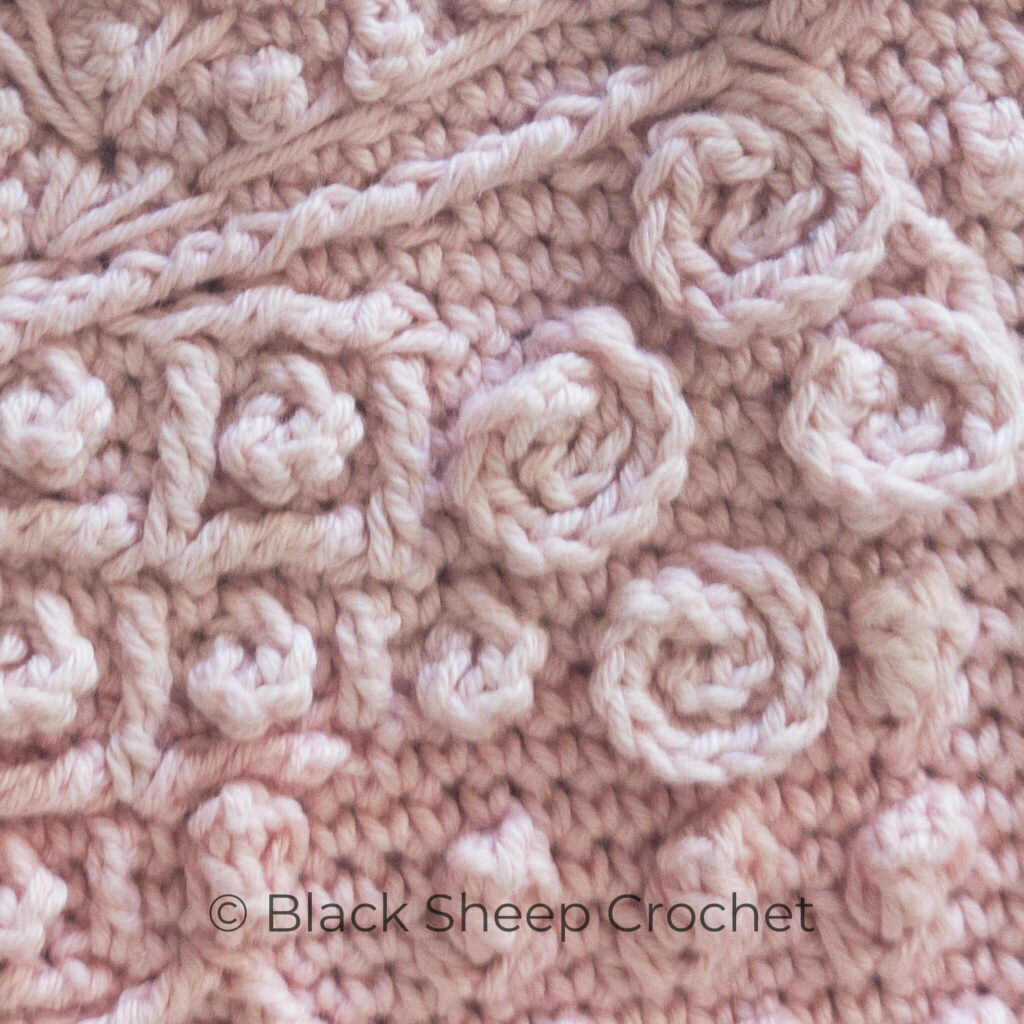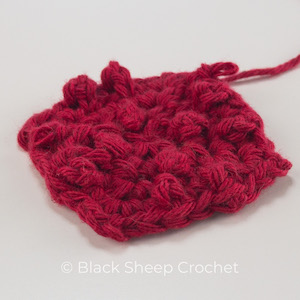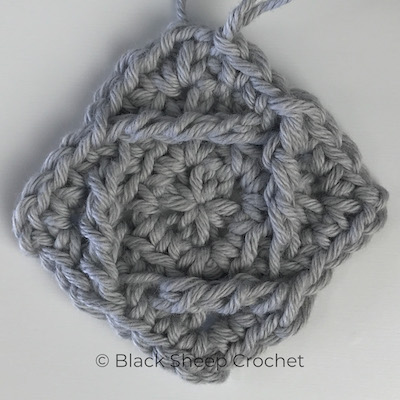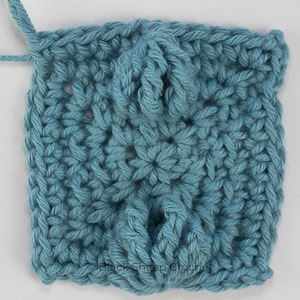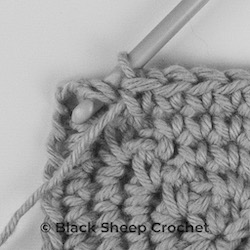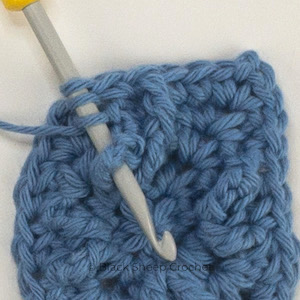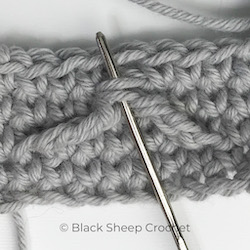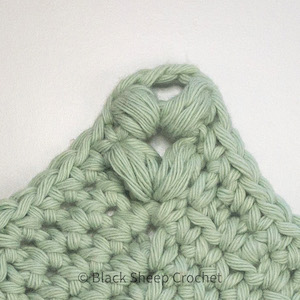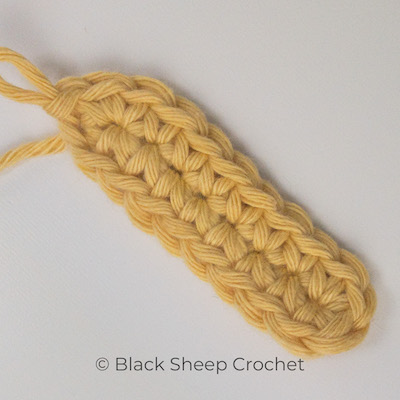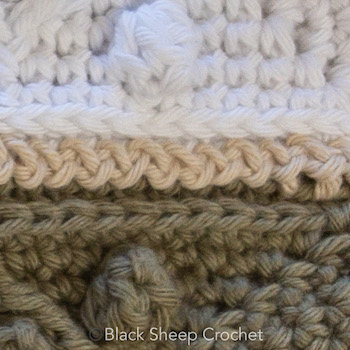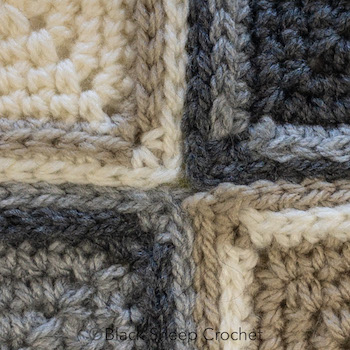Black Sheep Crochet designs are all about writing stories in yarn.
We combine stitches to literally or figuratively depicture a theme or story element, a character or a mood of a story.
For that, we ‘weave’ different stitches together, work around, behind or into them and we add decorative embellishments of all sorts.
What is front post anchoring?
Generally, a front post stitch is worked around a stitch that was made in a previous round or row. The front post is anchored around the stem and naturally pulled upward, pulling from the stem towards the top end of the stitch it is worked around.
When working around a stitch that is made in the same round, the direction of the stitch pull is no longer upwards, but usually directionally opposite to the stitch it is worked around. The affix ‘-anc’ is added to indicate that the stitch is worked around the anchored (base) end of the stitch and that the point of anchoring in relation to the next st is used as the reference for the stitch placement description, not when the stitch we are supposed to work around was made.
How to work a front post base anchored stitch
Example: fptr-anc_-2-1
fptr-anc_-2-1 – front post treble around the base of the st anchored 2 behind and 1 round below the next st
- A long st is anchored in the FLO of the st 2 ahead of the next st in the same round.
- The background layer is filled with sc, sc in BLO, sc (or any number and combination of sc and sc in BLO until the fp-anc st is supposed to be made for stitches different to the example).
- The top end/head of the original st is now “_-4-1” in reference to the next st, while the base/anchoring point is “_-2-1” in reference to the next st
- When working a fp st around a st made in the same row, it is pulling in the opposite direction of the previous long st and towards the base where the long st was anchored in the FLO. We therefore use the abbreviation ‘-anc’ to indicate the change in pull direction and to indicate that the position of the anchoring point of the st is our new reference point for the stitch placement description, since this is where we work around.
- The front post st ‘blends’ with the previous long st and gives the impression of a continuous long horizontal or slightly curved horizontal st. The length of the last long sts and how many rounds below it is anchored determines how flat or curved the connected sts appear.

- tr_+2-1 in FLO (indicated loop)
- sc, sc in BLO, sc

3. anchoring point is “_-2-1” (indicated FL) in reference to the next st

4. working around base of the st (indicated) at the anchoring point
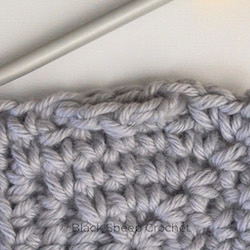
short last st
-> strong pull -> flat connection
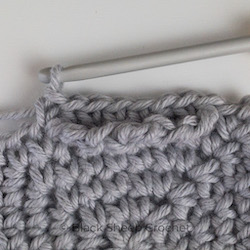
longer last st
-> less pull -> slightly curved connection
Instead of working around a stitch anchored in the same round, a front post can also be made around a stitch that is anchored in the front loop of a previous round.
Front post -anc stitches are usually worked backwards around a stitch that was made in the same round or around a stitch anchored in a recent round.
Example:
fptr-anc_-2-2 – front post treble around the base of the st anchored 2 behind and 2 rounds below the next st
- A long st was anchored in the front loop of the st 2 ahead and 2 rounds below the next st.
- Since the front post st is worked around the stem at the base where the previous long st is anchored in a previous row, we use this as the reference for the stitch placement description.

tr_+2-2 in FLO,
3 sc
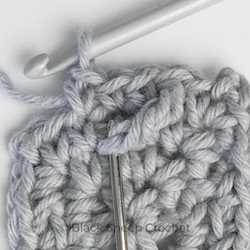
the anchoring point of the tr_+2-2 is now “_-2-2” in reference to the next st (indicated FL)

fptr-anc is worked around the base of the st anchored _-2-2 (indicated)

finished fptr-anc_-2-2: a slightly curved connected long st
Abbreviation indicating the front post stitch base anchoring variation
You will find a fp.. before the stitch type abbreviation when a stitch should be worked as a front post stitch and an -anc added to it to indicate that the stitch placement description refers to the point of anchoring, since the stitch is not worked around the stem towards the top, but around the stem towards the anchored base, pulling the stitch flat or slightly curved.
i.e. fptr-anc_-2-1 – a front post treble around the base of the st anchored 2 behind and 1 round below the next st.
i.e. fptr-anc_-2-2 – a front post treble around the base of the st anchored 2 behind and 2 rounds below the next st.
Video Tutorials
Right-Handed
Left-Handed
More Free Tutorials
‘Petranese’ explained –
dcbb – double crochet behind and below
‘Petranese’ explained –
hdc/hdcbb or double hdc tutorial
‘Petranese’ explained –
Long dc Star (5 legs) tutorial
‘How to…’ –
Puff Stitch Corner
